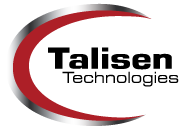Apr 19, 2017
In 2011 when Ascension joined 60 founding members in the Department of Energy’s Better Buildings Challenge to reduce energy consumption, the ministry included 68 acute care facilities encompassing 30 million square feet of space. Ascension was one of two health systems originally involved in the challenge, and set a bold goal to reduce energy use by 20 percent by 2020.
Now, six years later, Ascension has roughly doubled in size, operating 141 hospitals that encompass 50.2 million square feet. And its commitment to energy reduction has remained strong.
“As a Catholic health ministry, environmental stewardship is part of Ascension’s DNA,” said Robert J. Henkel, FACHE, President and Chief Executive Officer, Ascension Healthcare, and Executive Vice President, Ascension, who was an original sponsor of the energy efficiency initiative. “Our Mission calls us to sustain and improve the health of individuals and communities, and we know caring for the environment is an essential piece of that. From a Mission standpoint as well as a value standpoint, it was the right thing to do.”
Ascension’s efforts were rewarded in December 2016 when it reached its Better Buildings Challenge goal of 20 percent energy reduction more than three years ahead of schedule. Ascension has reduced energy use by 21.4 percent, yielding a total cost avoidance of $53.3 million and carbon dioxide emission avoidance of 1,114,600 tons. The calculated percentage takes into account both new facilities and those that are no longer part of Ascension.
And facility managers soon will get a boost from technology as they develop their next bold goal.
“Previously, energy efficiency data was only available in hindsight based on utility bills. As a result of a collaboration including Medxcel Facilities Management, The Resource Group and Ascension Information Services, we are very close to rolling out a dashboard to report real-time results,” said Jim Prince, Ascension Energy Manager. “Instead of monitoring selected metrics on a monthly basis, each facility will have access to information on a minute-by-minute basis so that facility leaders will know where to focus their day-to-day resources. Another big push involves spreading best practices learned in our acute care facilities into our smaller sites of care.”


